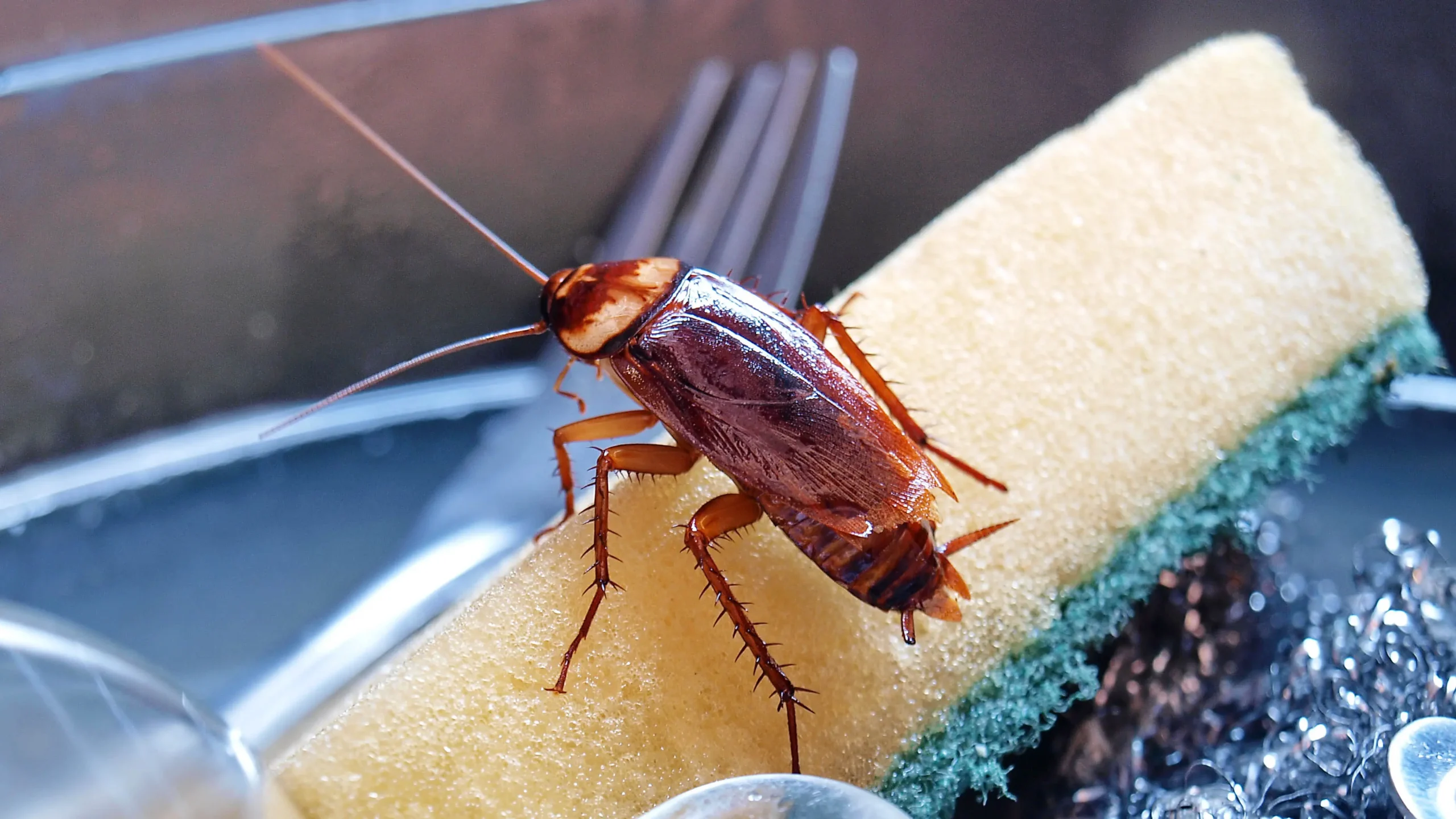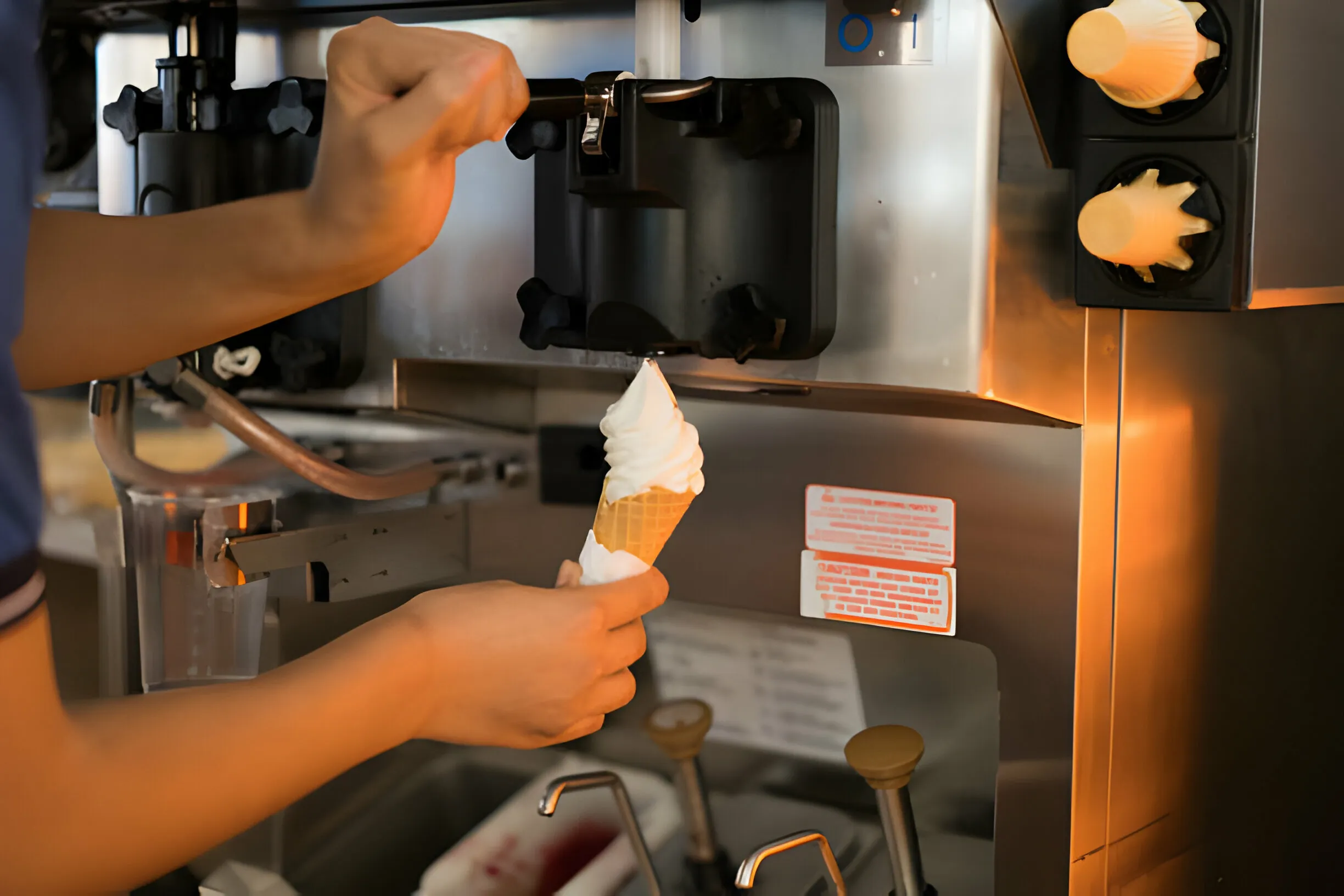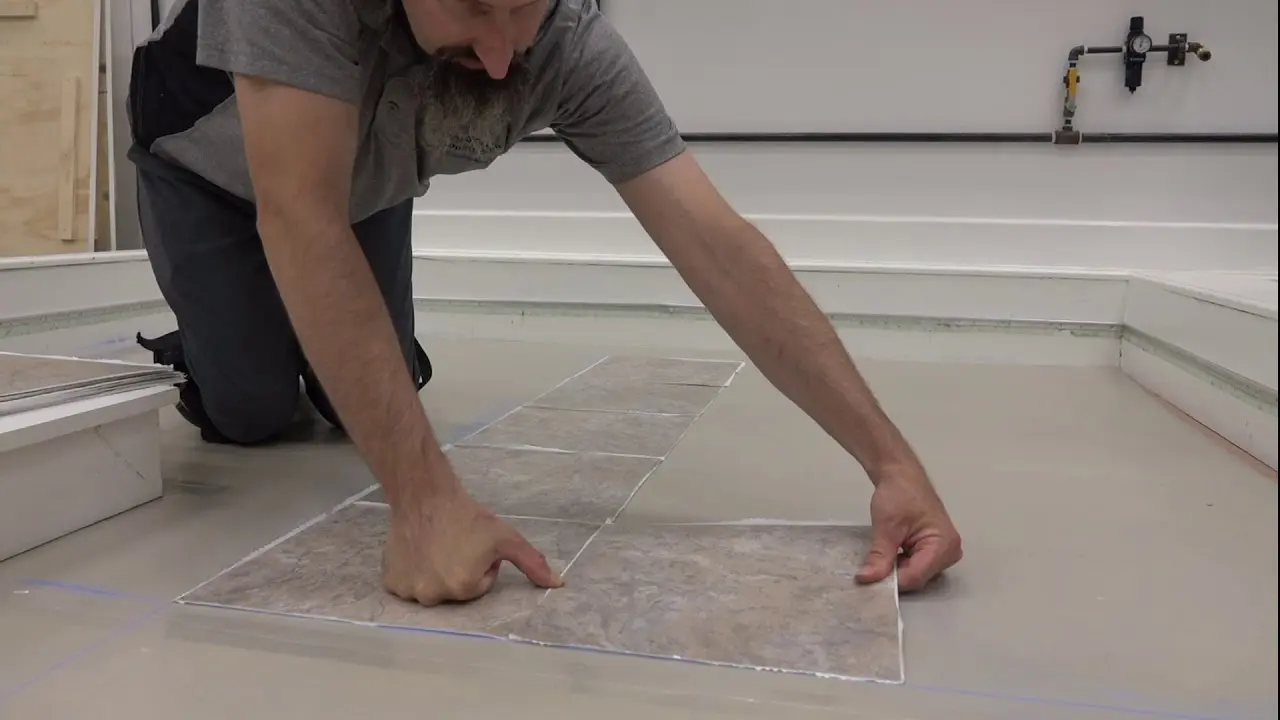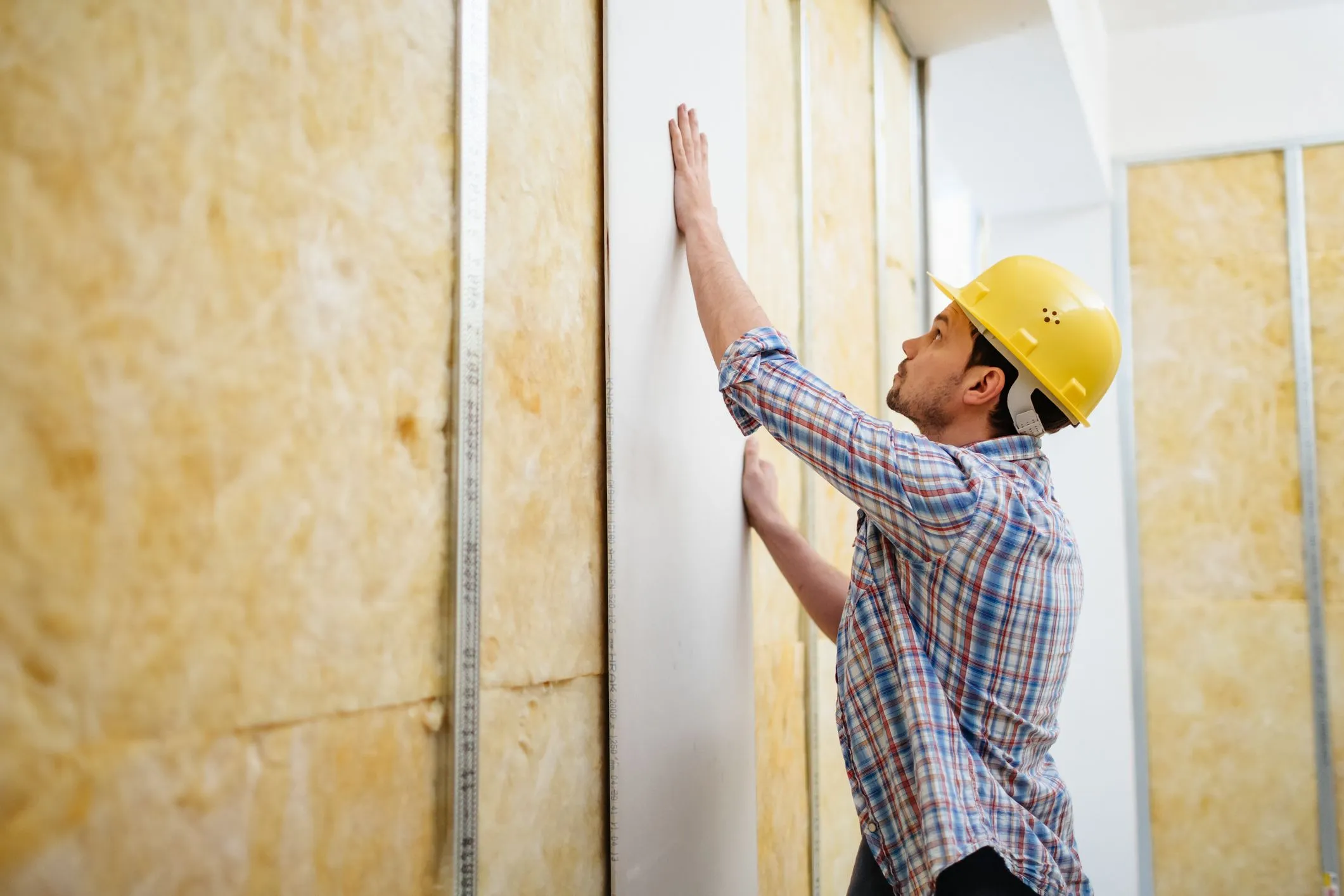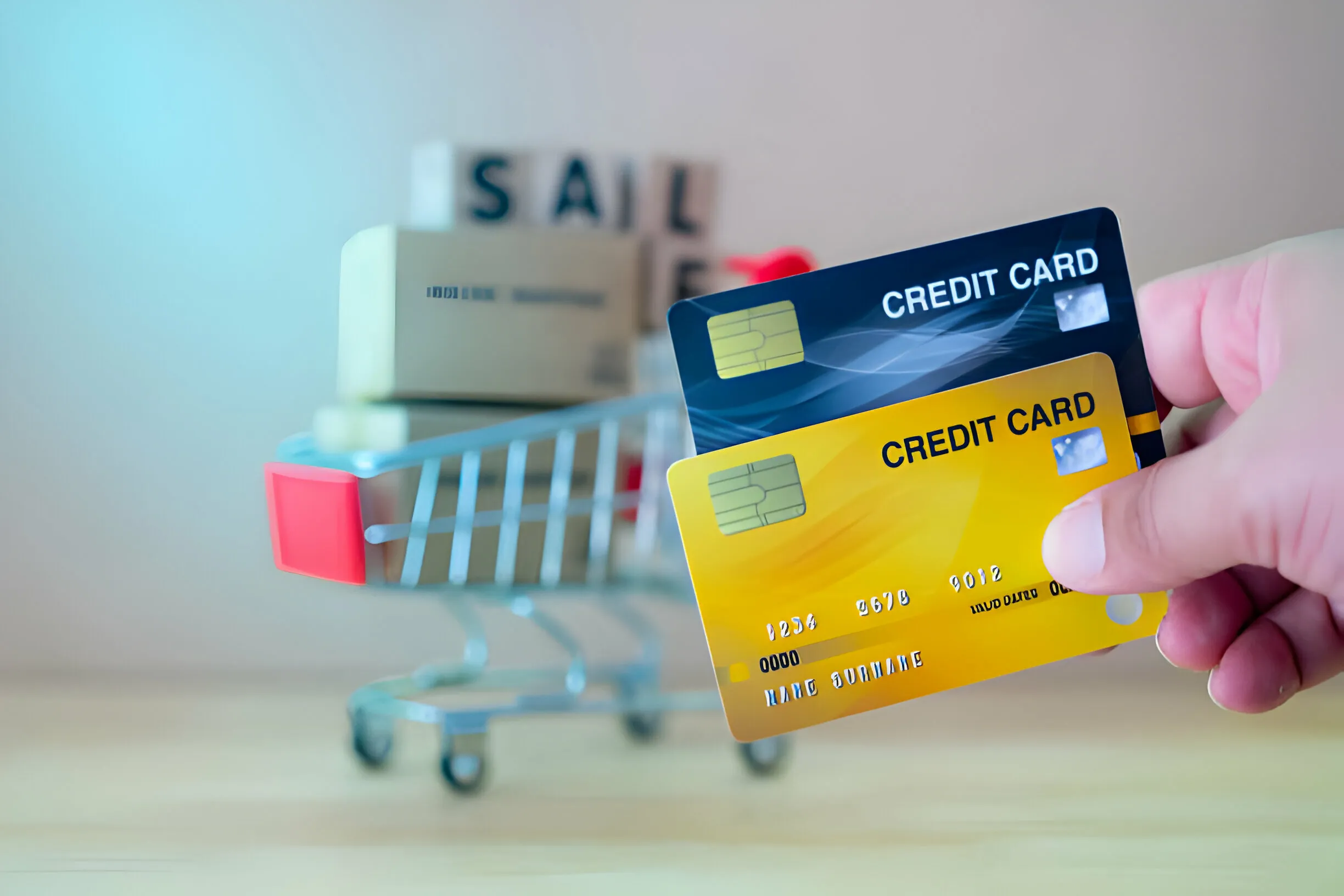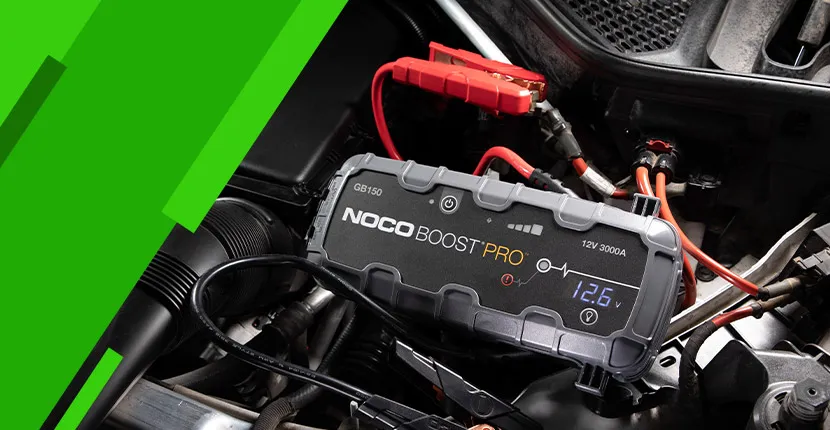If you own a cast-iron skillet, you are aware of how crucial it is to clean it correctly. The protective layer that makes cast-iron cookware nonstick requires seasoning, and if this layer is compromised, the pan will rust quickly.
Any home cook’s toolkit should include a cast-iron skillet for everything from cakes and pies to perfectly seared steaks and one-pan meals. However, the one drawback of this sturdy cookware is how to clean cast iron.
Many do’s and don’ts are included in cast-iron skillet cleaning instructions: Use steel wool instead of soap, and avoid putting it in the dishwasher.
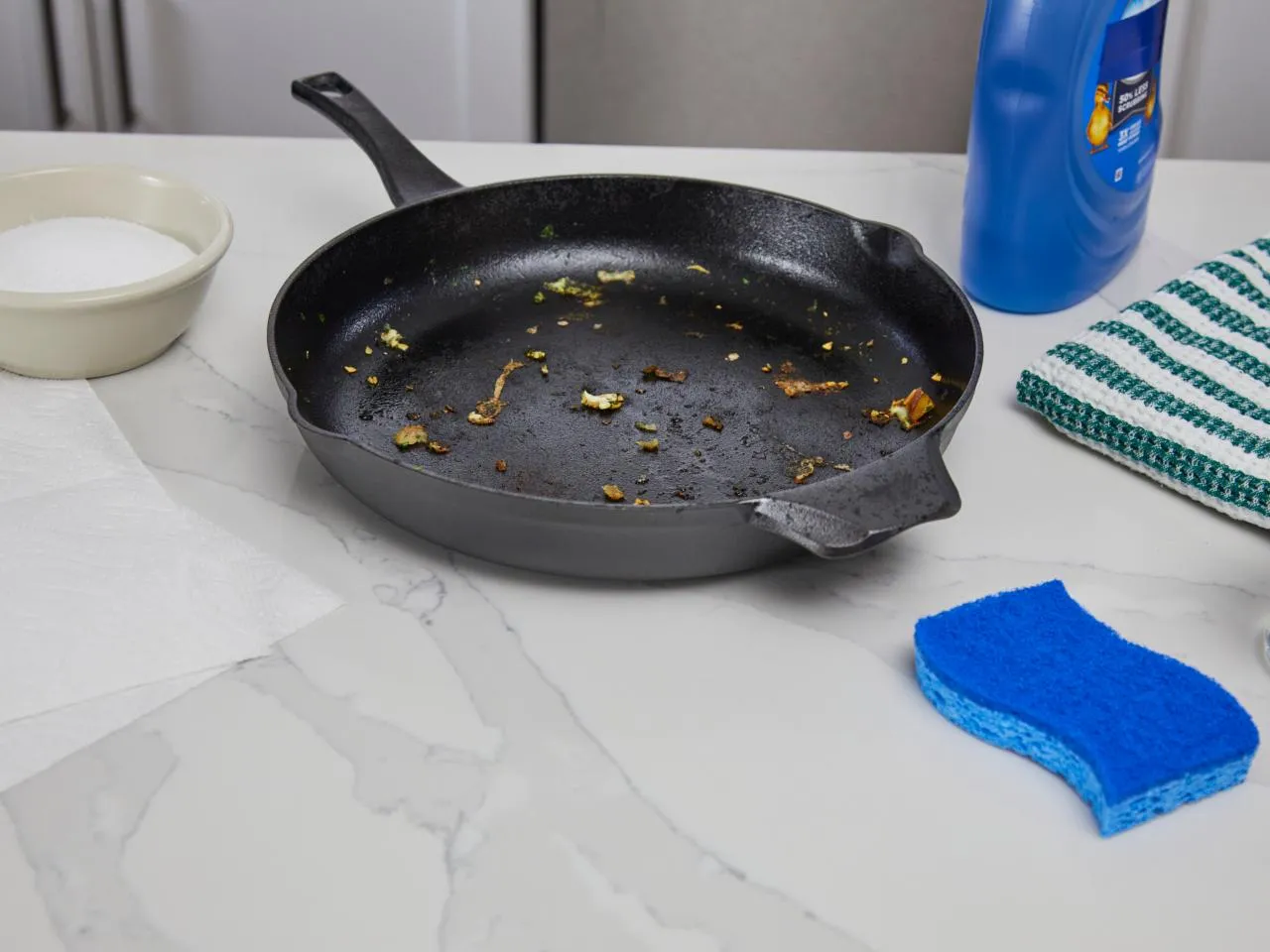
It’s nearly enough to put off a cook entirely from using cast iron.
Here’s a quick tip, though: if you do these, your skillet will stay well-seasoned, rust-free, and clean for many years to come.
How to Clean Cast Iron After Cooking
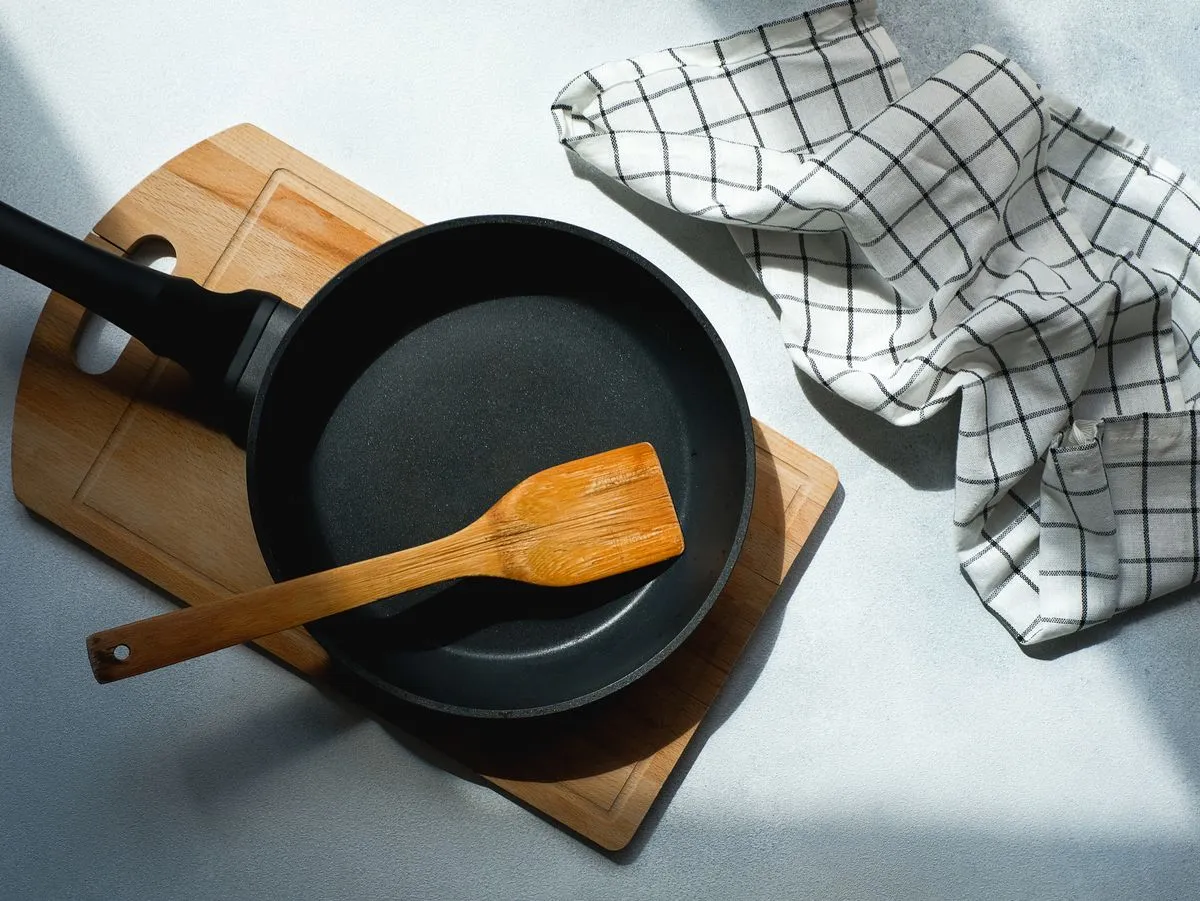
Cast-iron cookware can withstand intense cooking, so when you’re done, there may be some mess to clean up.
Don’t worry, though; your pan can withstand any method you choose. Here’s a detailed how-to.
1. While the Pan is Still Hot, Clean it
Even though it may be tempting to leave the pan alone while you savor your freshly made meal, taking a few minutes to properly care for your cast iron right away will save you a ton of time down the road.
This is a result of stuck-on food solidifying as it cools.
2. Use Hot Water to Wash the Pan; Do Not Use Soap
Food residue can be released from pans with the use of hot water. Apply pressure to the pan while using your cast-iron scrubber.
You might have come across contradictory information regarding the safety of soap use. According to conventional wisdom, soap removes pan seasoning.
There are articles on the Internet that say you can use a small amount of soap and your pan will work just fine. After putting both approaches to the test, we found that soap does, in fact, slightly remove cast iron. Keep away.
3. Use a Dry Towel and Some Salt to Remove Stubborn Messes
The food is helped to come loose by the abrasive nature of the salt, and the effort is increased when using a dry towel to work it in because of its large surface area.
Try adding some boiling water to the pan if the food still refuses to come off.
How to Clean a Cast Iron Skillet with Salt
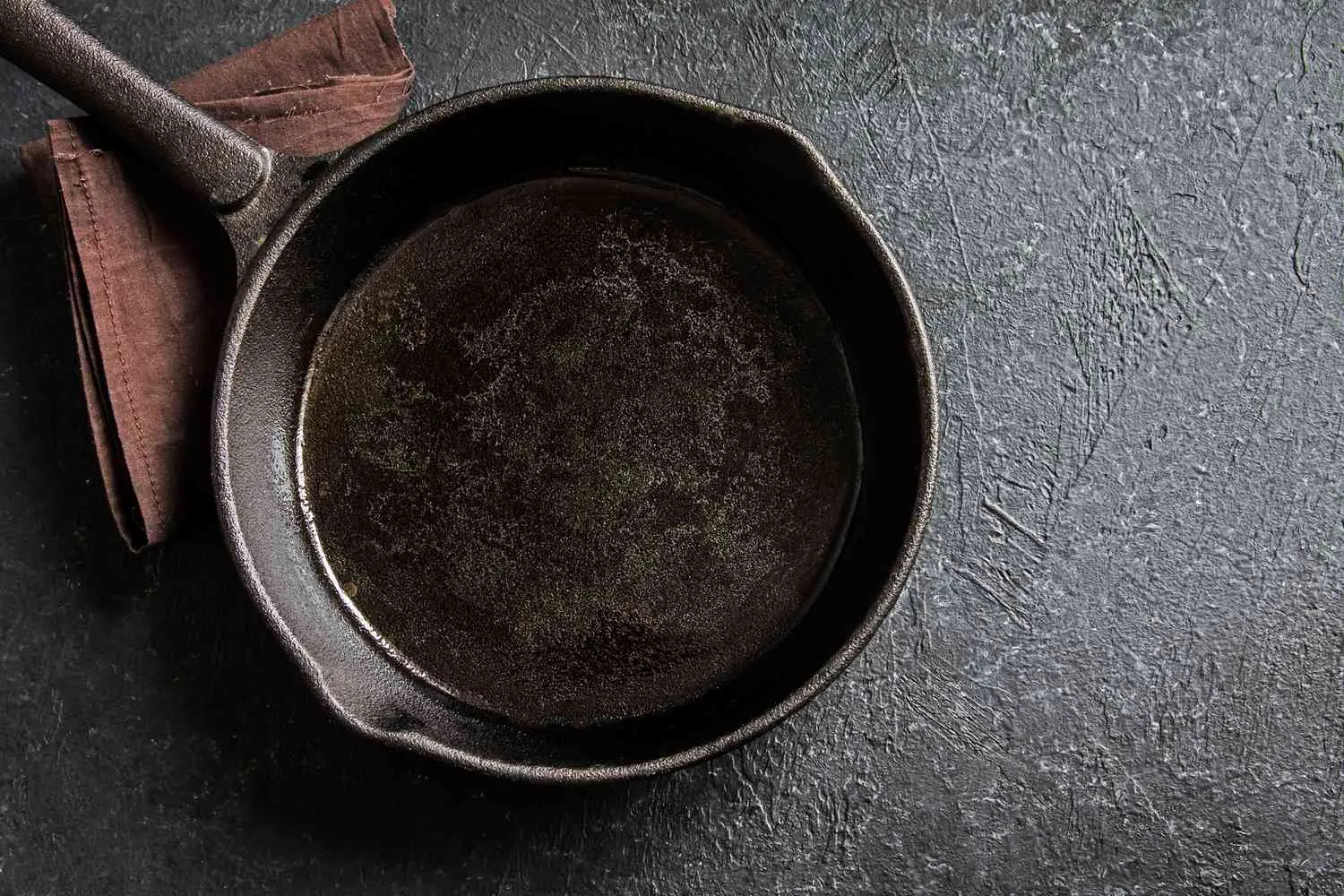
Using coarse salt is a great substitute for dish soap, and it’s a better way to keep the flavor of your skillet intact.
You can help maintain the patina of your cast iron and cut down on the frequency of pan seasoning by cleaning it with salt.
The choice of approach ultimately boils down to personal preference. Although using soap and water to clean is more effective, we still like using salt to increase the non-stick coating.
1. Empty the pan, discarding any leftover food or drippings in the trash.
2. Coat the entire skillet with a thin layer of kosher salt. Kosher salt is a better choice for cleaning because it is coarser than table salt.
3. Using coarse salt is a great substitute for dish soap, and it’s a better way to keep the flavor of your skillet intact.
You can help maintain the patina of your cast iron and cut down on the frequency of pan seasoning by cleaning it with salt.
The choice of approach ultimately boils down to personal preference. Although using soap and water to clean is more effective, we still like using salt to increase the non-stick coating.
How to Remove Rust From a Cast-Iron Skillet with Vinegar

Even though something is meant to last, you can still break it, especially if you (or your children, or well-meaning visitors) put it in the dishwasher or let it soak in water overnight. Your cast iron might end up rusty if that occurs.
If the rust is minor, simply use a scrubber and water to clean it and then apply oil.
Fortunately, a little white vinegar and elbow grease will usually be enough to whip that pan back into shape if you’ve got a bigger issue.
1. Add equal parts white vinegar and water to the pan and let it soak to restore it to its original condition.
2. Set the oven to 450 degrees Fahrenheit while the pan is soaking.
3. After 30 to 60 minutes, give the pan a once over with a stiff-bristled brush to see if any rust is coming off.
You can let it soak for a little while longer but watch it carefully since the vinegar may begin to discolor the pan. You can move on to the next step as soon as the rust has been removed.
4. Use a nylon brush, metal scouring pad, or fine steel wool scrubbing pad to gently remove the rust. Since you’ll be re-seasoning the pan after cleaning, metal can be used as needed.
5. After rinsing, dry the pan. Apply a neutral oil, inside and out, to the whole pan’s surface using a paper towel.
6. For one hour, place the skillet upside down on the upper rack of a preheated oven. Lay tinfoil underneath the rack to collect any dripping extra oil.
7. After letting the pan cool, give it another wipe-down with paper towels and store it.
Do You Have to Clean Cast Iron After Every Use?
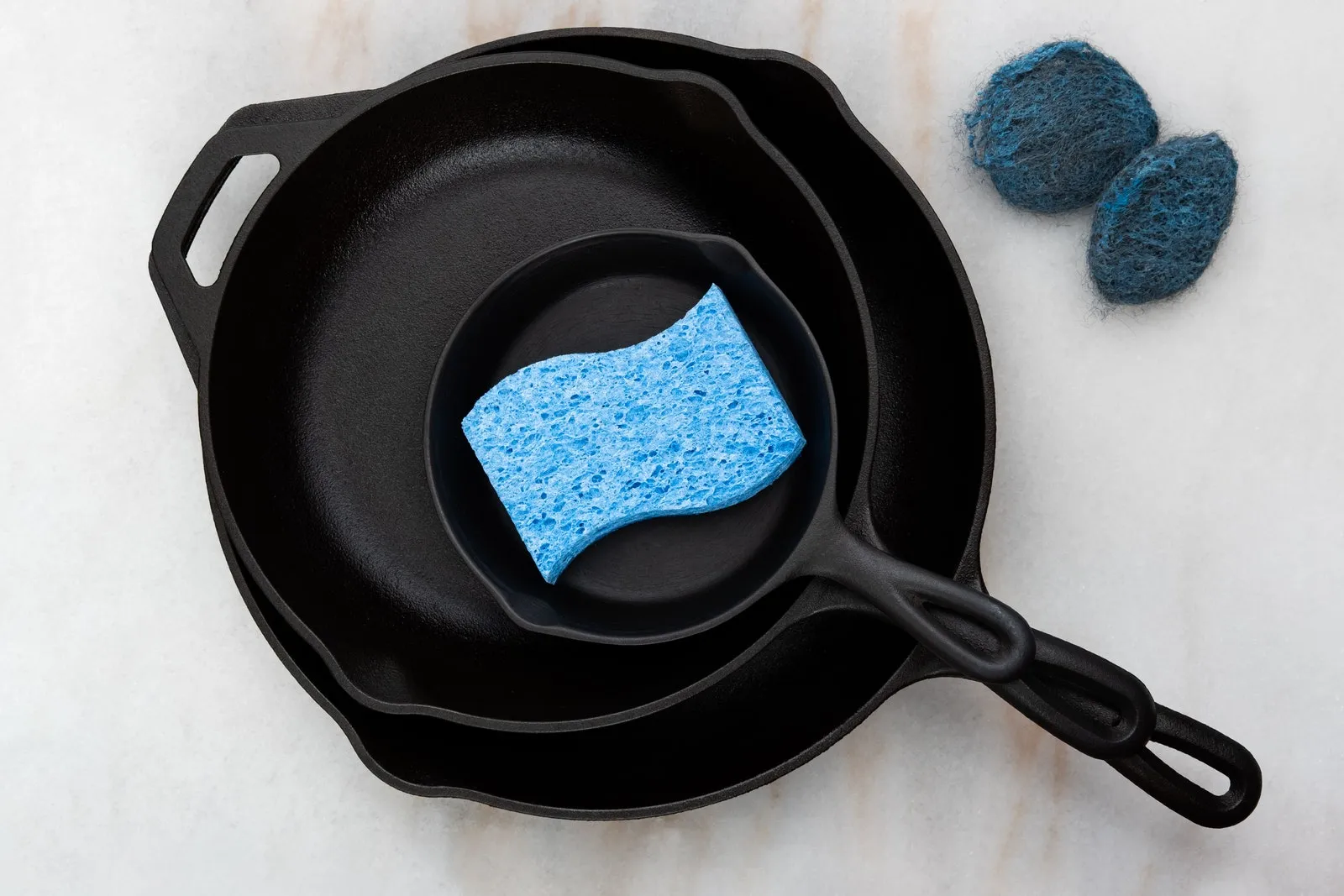
No. We don’t clean our cast-iron skillet more than once a month, but that’s just a matter of taste. And we use it for cooking at least a couple of times a week.
As long as it’s not too much, the cooked food scraps that accumulate on the pan between dishes enhance their flavor and texture.
In our pan, we mostly cook stir-fries with ingredients like shrimp, chicken, rice, vegetables, and savory seasonings and sauces.
We would probably wash our skillet well before and/or after cooking something with a very different flavor profile.
How to Season a Cast-Iron Pan
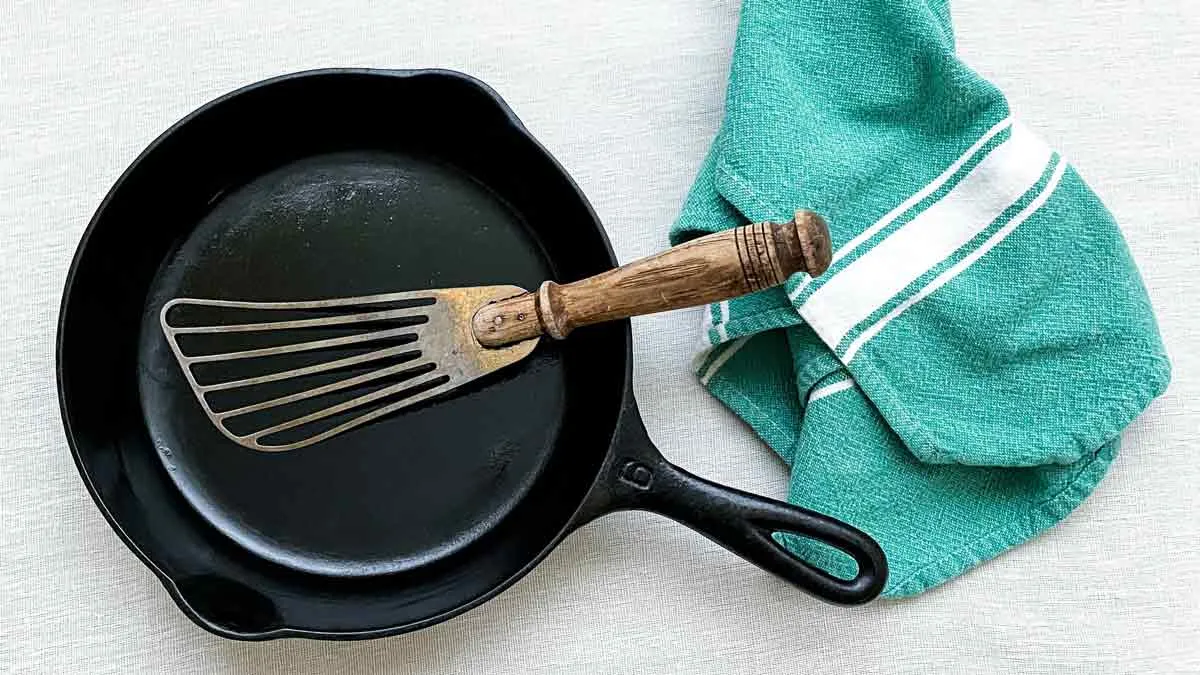
The secret to seasoning a cast-iron skillet is to use oil to create a nonstick surface and stop it from rusting, not herbs and spices.
Although the skillet needs to be cleaned after every use, seasoning is only required infrequently, usually when you notice that the seasoning is becoming weak.
1. Using a paper towel or dishcloth, lightly coat the interior of the pan with cooking oil.
2. For an hour, heat the skillet at 350°F to solidify the oil and produce a naturally nonstick surface.
Cast-iron cookware needs to be cleaned differently than stainless steel or nonstick cookware.
Though this hardy cookware material can tolerate years of banging around an oven range or grill top, scorching heat, and the debris of metal utensils, cast iron has a sensitive side.

